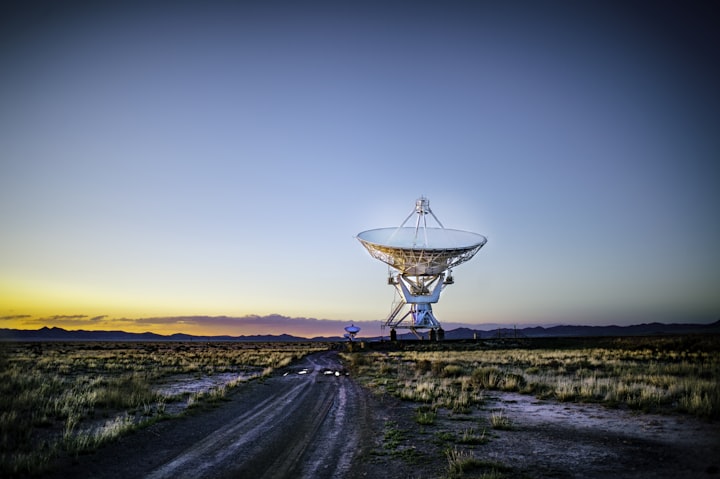Issue 5: Optical Telescope Special of LAMOST
In this issue, we will start to introduce the representative mainstream optical telescopes in the world.

Some of you outside the circle may not have heard of them, so let's feel the charm of these big science devices.
In this issue we will talk about LAMOST, the full name of Large Sky AreaMulti-Object Fiber Spectroscopy Telescope, that is, the Large Sky Area Multi-Object Fiber Spectroscopy Telescope, the Chinese name Guo Shoujing Telescope. It is well known that any person's name that can be used to name an important device or road is usually a special contributor.
Guo Shoujing (1231-1316) was a famous astronomer, mathematician, water expert, and instrument maker in Yuan Dynasty. Since the astronomical telescope is named after him, we will mainly introduce his contributions to astronomy and instruments. He wrote fourteen kinds of astronomical laws and regulations, such as "Pui Bu" and "Li Cheng", and formulated the "Chronological Calendar", which had been in use for more than 360 years, and also reformed and invented twelve kinds of instruments, such as the "Jian Yi", the "Gao Meter", the "Wu Ji", and the "Hun Yi". The compilation of the "Chronological Calendar" was based on a large number of astronomical observations made by these astronomical instruments. It is worth mentioning that the concept of "altitude" was also proposed by Guo Shoujing for the first time. It can be said that Guo Shoujing was the greatest scientist of his time, none other than Guo Shoujing.
Shoujing Guo
In 1970, the International Astronomical Society named a crater on the back of the Moon "Guo Shoujing Crater", and in 1977, the International Minor Planet Center named the asteroid 2012 "Guo Shoujing Asteroid". So far we understand why this national major scientific and technological infrastructure named Guo Shoujing Telescope, is to commemorate Guo Shoujing old man for China's astronomical instrumentation career who made outstanding contributions.
Back to the topic!
LAMOST belongs to the Xinglong Observatory of the National Astronomical Observatory of the Chinese Academy of Sciences, located at the southern foot of Mount Wuling, the main peak of Yanshan in Xinglong County, Hebei Province, China, north of the Great Wall, at an altitude of 960 meters, with geographical coordinates of 117 degrees 34 minutes 30 seconds east longitude and 40 degrees 23 minutes 36 seconds north latitude.
In May 1992, a research collective headed by academicians Wang Shou-Guan and Su Ding-Qiang proposed the construction of LAMOST, which received wide support.
In April 1997, the State Planning Commission approved the LAMOST project proposal.
February 1999, the LAMOST project preliminary design report was prepared.
August 2001, LAMOST was approved by the State Planning Commission and formally entered the construction phase of the project.
June 2009, LAMOST successfully passed the complete acceptance of the National Development and Reform Commission at the Xinglong observation base.
In May 2010, LAMOST Operation and Development Center was officially established, with Cui Xiangqun academician as Chief Engineer.
At this point, LAMOST began to formally observe and output a large amount of astronomical data continuously.
First to feel the charm of it ↓↓↓↓↓
This shape has not very science fiction, like a ready-to-shoot down any close to the Earth's laser cannon. If there is an alien creature close to the Earth, it is afraid that it is the first to be destroyed as a threatening lethal weapon. Although the reality is that it does not have any offensive power, it is enough to shock the mind.
In terms of technology, LAMOST uses both thin mirror active optics and spliced mirror active optics on the reflective Schmidt correction mirror, cleverly achieving a breakthrough in optical telescope with both a large field of view and large aperture. The MA consists of 24 hexagonal flat sub-mirrors (diagonal length 1.1m, thickness 25mm) and the MB consists of 37 hexagonal spherical sub-mirrors (diagonal length 1.1m, thickness 75mm). The stitched MA size is 5.72m×4.4m and the MB size is 6.67m×6.05m, with an effective flux aperture of 4m and a field of view of 5°.
LAMOST optical path diagram
Reflective Schmidt correction mirror MA
Main mirror MB
Another technological breakthrough of LAMOST is the parallel controllable fiber positioning technology, which can accurately locate 4000 observation targets at the same time, and is also an international leading technology.
4000 Fiber Optic Positioning System
The main task of LAMOST is to conduct a general survey of celestial objects, i.e., a "census" of galaxies, and the 4000-target fiber-optic positioning technology has greatly improved census efficiency. The 3.9-meter Anglo-Australian Telescope AAT of the Australian Anglo-Australian Observatory has a field of view of 2° and 400 fibers; the 2.5-meter APO telescope of the Sloan Digital Sky Survey Program has a field of view of 3° and 640 fibers. The LAMOST telescope has a field of view of 5° and 4,000 fibers, making it the world's highest spectral acquisition telescope. To date, LAMOST has acquired 11.25 million spectra in seven years and is the first survey project in the world to acquire 10 million spectra.
LAMOST pilot survey and the six-year coverage of the sky area before the official survey
The National Astronomical Observatory Information Center has set up a special download platform for the release of LAMOST DR6 data, and scientific users can visit the website (http://dr6.lamost.org/) for data queries and downloads. In November 2019, NAU researcher Jifeng Liu relied on LAMOST to discover the most massive stellar black hole (70 times the mass of the Sun) to date and provided a new way to take advantage of the LAMOST survey to find black holes. This result has shocked the astronomical community, as it overturns the knowledge of stellar black hole formation and is expected to revolutionize the theory of stellar evolution and black hole formation. Although the results were later challenged by Hugues Sana, an associate professor in the Department of Physics and Astronomy at KU Leuven, Belgium, Liu Jifeng's team has responded with scientific data and has found new evidence.
LAMOST's initial "survey plan" includes galactic structure, galactic redshift surveys, and multi-band astronomical authentication, for both intra- and extra-galactic studies. The former includes the formation, structure, and evolution of the galaxy, and the search for the first generation of stars in the universe; the latter includes the large-scale structure of the entire universe, and the study of the nature of dark matter and dark energy. Due to various reasons such as the deterioration of the current LAMOST performance and the observation conditions of Xinglong Station, the current survey mainly focuses on the stars in the Milky Way.






Comments
There are no comments for this story
Be the first to respond and start the conversation.